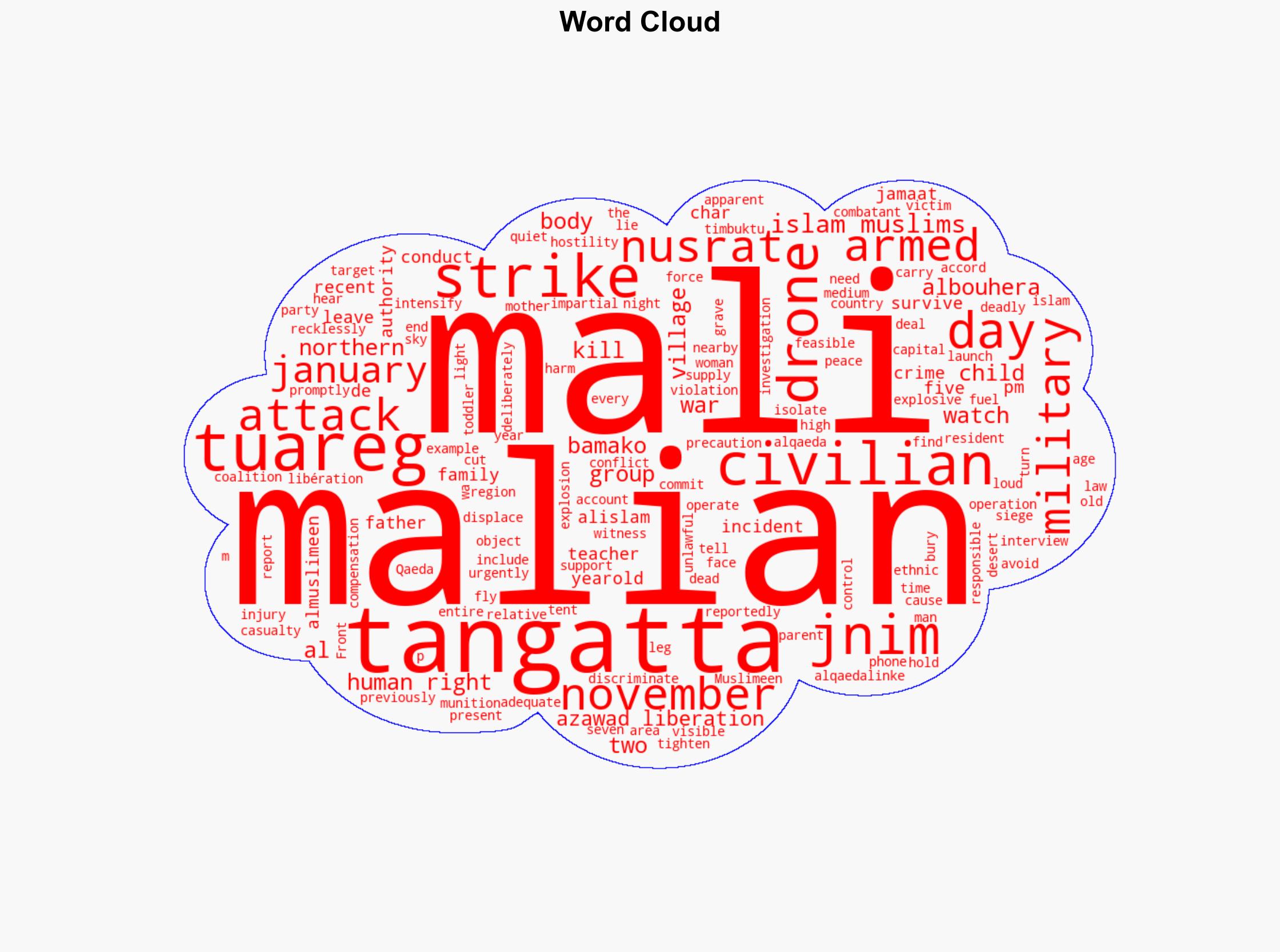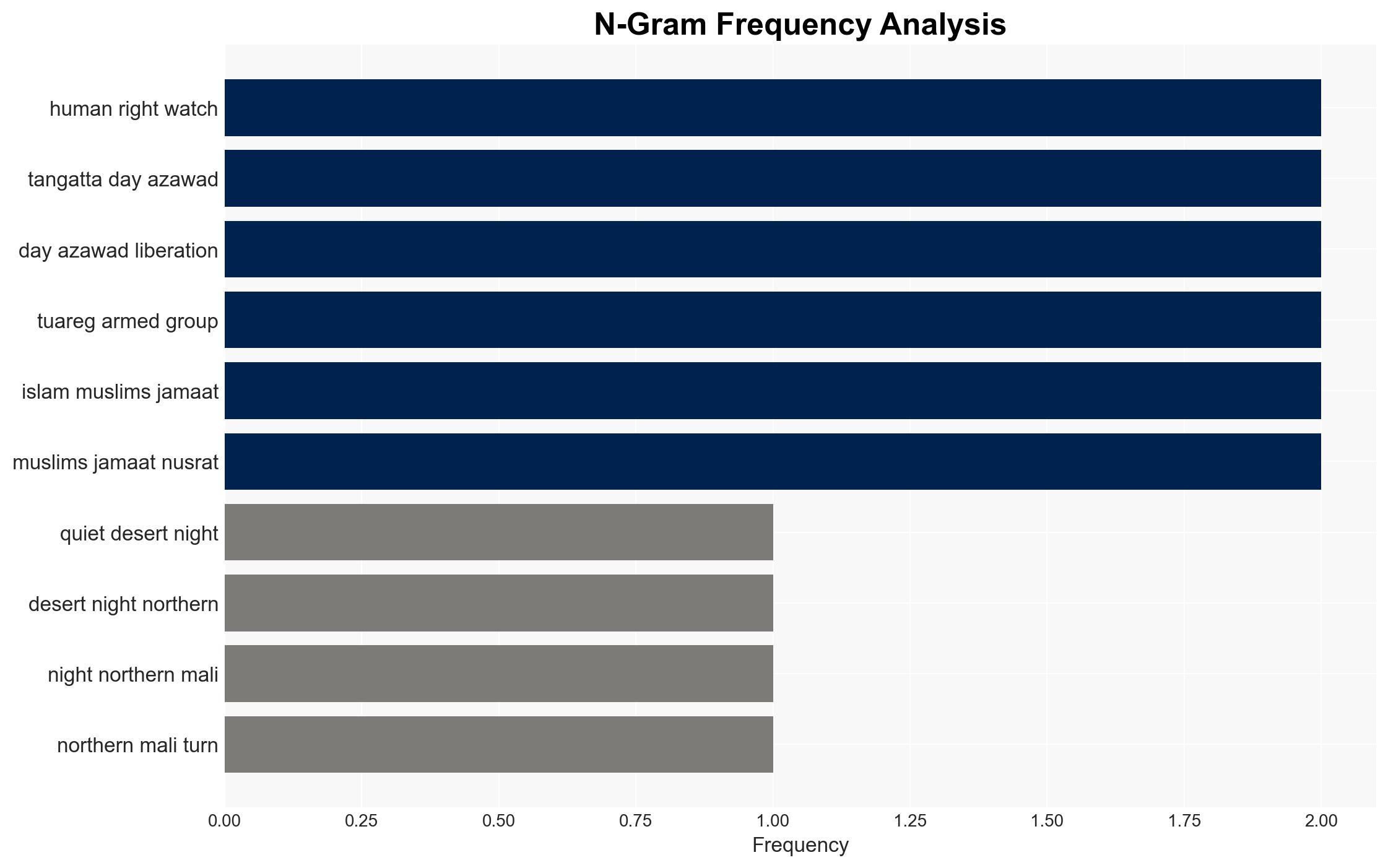A Family Erased in Mali – Human Rights Watch
Published on: 2025-11-18
AI-powered OSINT brief from verified open sources. Automated NLP signal extraction with human verification. See our Methodology and Why WorldWideWatchers.
Intelligence Report:
1. BLUF (Bottom Line Up Front)
The most supported hypothesis is that the Malian military conducted a drone strike in Tangatta, resulting in civilian casualties, potentially constituting a war crime. The confidence level is moderate due to limited independent verification. Recommended actions include advocating for an independent investigation and engaging with international bodies to ensure accountability and prevent future incidents.
2. Competing Hypotheses
Hypothesis 1: The Malian military intentionally targeted the Tuareg family, suspecting them of harboring or being affiliated with armed groups, resulting in civilian casualties.
Hypothesis 2: The strike was a miscalculation or intelligence failure, with the military mistakenly identifying the target as a legitimate threat, leading to unintended civilian deaths.
Assessment: Hypothesis 1 is more likely given the historical context of military operations in the region and previous incidents of civilian casualties. However, the lack of transparency and independent verification limits confidence.
3. Key Assumptions and Red Flags
Assumptions: The Malian military has operational control over drone strikes and accurate intelligence capabilities. The Human Rights Watch report is based on credible witness accounts.
Red Flags: Potential bias in witness testimonies due to ethnic tensions. Limited access to the region for independent verification. Possible misinformation or propaganda from involved parties.
4. Implications and Strategic Risks
The incident risks escalating ethnic tensions between the Tuareg population and the Malian government, potentially fueling recruitment for armed groups. International condemnation could lead to diplomatic isolation and sanctions. The incident may also embolden extremist groups to exploit grievances for propaganda and recruitment.
5. Recommendations and Outlook
- Advocate for an independent investigation by international bodies to ensure accountability and transparency.
- Engage with regional partners to strengthen intelligence-sharing and operational oversight to prevent future civilian casualties.
- Best-case scenario: An independent investigation leads to accountability and improved military conduct.
- Worst-case scenario: Escalation of ethnic violence and increased support for extremist groups.
- Most-likely scenario: Continued tension and sporadic violence with limited international intervention.
6. Key Individuals and Entities
No specific individuals are named in the report. Entities involved include the Malian military, Tuareg armed groups, and Human Rights Watch.
7. Thematic Tags
Counter-Terrorism, Human Rights, Military Operations, Ethnic Conflict
Structured Analytic Techniques Applied
- ACH 2.0: Reconstruct likely threat actor intentions via hypothesis testing and structured refutation.
- Indicators Development: Track radicalization signals and propaganda patterns to anticipate operational planning.
- Narrative Pattern Analysis: Analyze spread/adaptation of ideological narratives for recruitment/incitement signals.
Explore more:
Counter-Terrorism Briefs ·
Daily Summary ·
Support us





